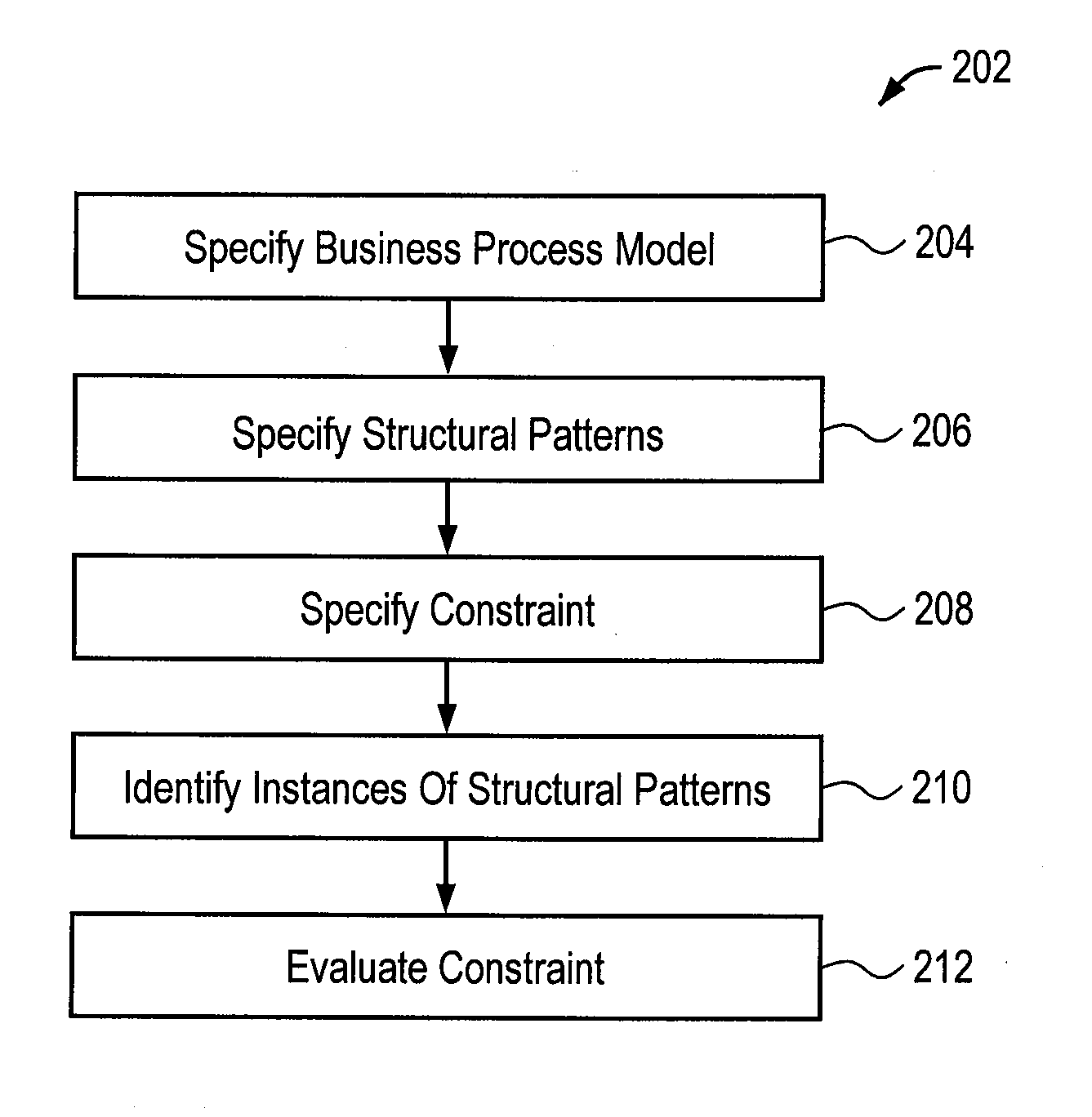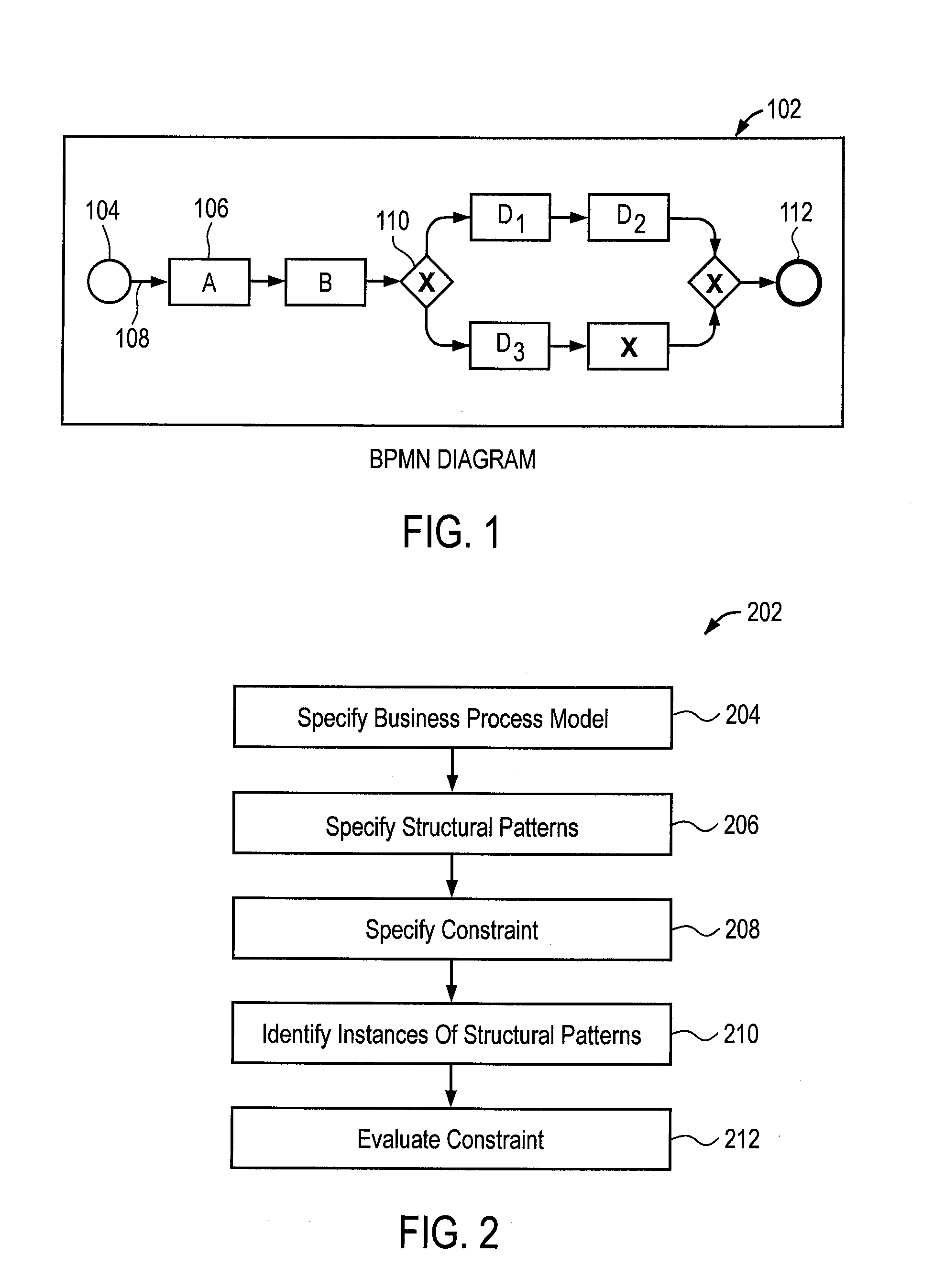Evaluating pattern-based constraints on business process models
a business process model and pattern-based technology, applied in the field of computing, can solve problems such as difficult to satisfy constraints simultaneously with modeling tools, critical situations, and significant challenges for related software modeling tools
- Summary
- Abstract
- Description
- Claims
- Application Information
AI Technical Summary
Benefits of technology
Problems solved by technology
Method used
Image
Examples
Embodiment Construction
[0028]FIG. 1 shows a Business Process Modeling Notation (BPMN) diagram 102 that relates to example embodiments. The diagram 102 describes a model that includes events 104, 112, tasks 106, sequence connectors 108 and gateways 110. In this case, a start event 104 is connected to task A 106, which is followed by task B. A gateway then connects to two separate task sequences, task D1 followed by task D2, and task D3 followed by task X. A final gateway leads to an end event 112 that indicates the termination of the sequence. As discussed below, events generally indicate properties or states of the underlying model or system, tasks indicate prescribed activities, gateways control flow along paths of the model and sequence connectors connect model elements. Internally, the diagram 102 is typically represented as a Meta Object Facility (MOF) model (e.g., as in SAP NETWEAVER BUSINESS PROCESS MANAGEMENT (BPM)). The MOF specification is the foundation of the Object Management Group (0MG) indus...
PUM
 Login to View More
Login to View More Abstract
Description
Claims
Application Information
 Login to View More
Login to View More - R&D
- Intellectual Property
- Life Sciences
- Materials
- Tech Scout
- Unparalleled Data Quality
- Higher Quality Content
- 60% Fewer Hallucinations
Browse by: Latest US Patents, China's latest patents, Technical Efficacy Thesaurus, Application Domain, Technology Topic, Popular Technical Reports.
© 2025 PatSnap. All rights reserved.Legal|Privacy policy|Modern Slavery Act Transparency Statement|Sitemap|About US| Contact US: help@patsnap.com



